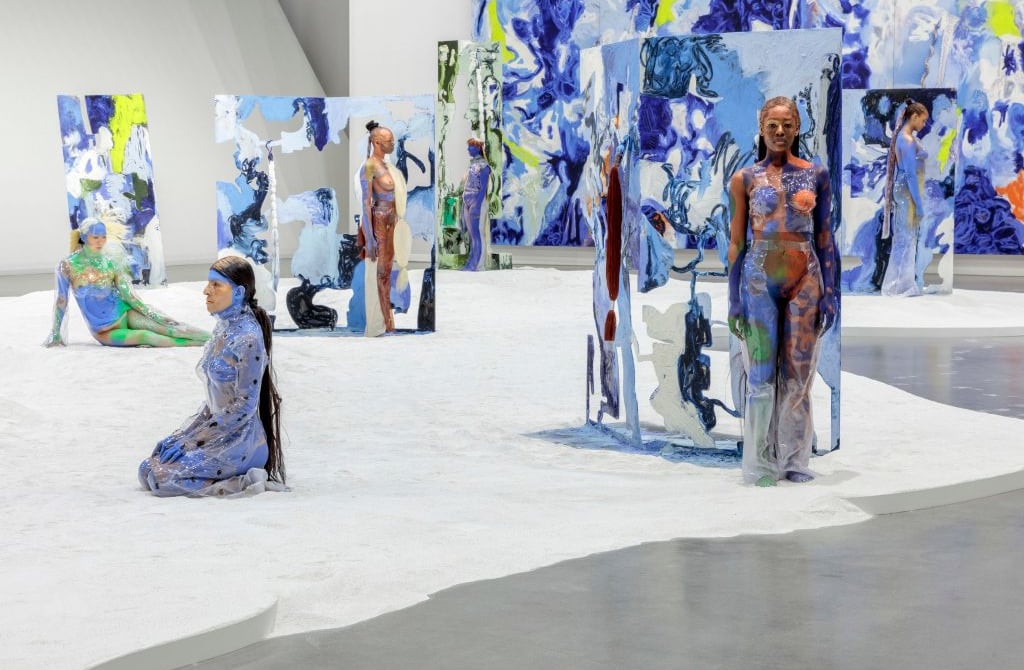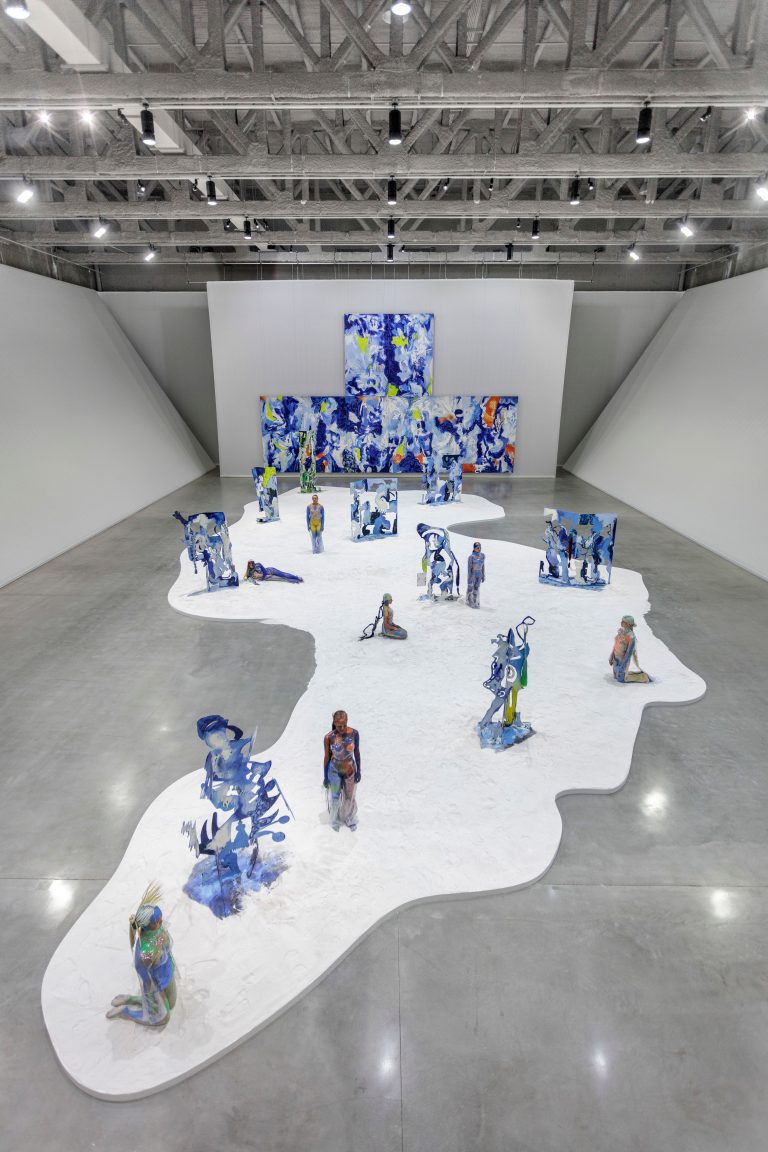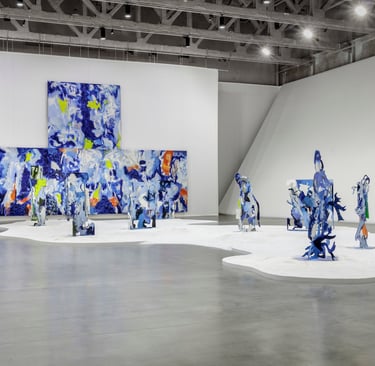Show Review: Donna Huanca's "Obsidian Ladder"
Elizabeth Cruz-Nakamura
1/17/20203 min read


GRAPHITE Journal would like to express our support for the MAF Union and the former employees.
While standing in the Marciano Art Foundation’s overwhelmingly fragrant theater, viewers, performers, and workers share the same breath creating a micro-atmosphere that offers a sense of communal olfaction. The smoky, earthy fragrance that evaporates consistently through the gallery is obtrusive and unavoidable. The overpowering scent experienced throughout the installation flattens the viewers’ olfactory sensations — a means of providing the audience with a rare moment of sensual overlap.
The sound of a kindling fire, breath, and chopped chant-like vocalizations draw us further into the scented realm. Huanca forces participants to consider their breath, a reconciliatory gesture drawing attention to our colonization of the atmosphere. It is a reminder of our scale and impact in comparison to deep time — a heuristic for understanding our collective molecular memory.


Obsidian Ladder, Huanca’s first major solo show in the United States, attempts to reconfigure the Marciano Art Foundation’s masculinist legacy. The artist transforms the once Masonic temple into an anthropocenic femme utopia, reterritorializing the space from its cishet male predecessors. The all femme group of models resemble Eckhaus Latta models; the semi-nude painted performers dressed in PVC, femininity ameliorated with hair extensions, wear the odd garment like a cropped fuzzy fleece with exaggerated extended sleeves that almost touch the floor. Painted like a psychedelic Yves Klein, the models’ bodies are adorned in tie-dye blue, orange, and green.
The models, silent and meditative, dwell within a plot of white sand, shaped like a gaian South America and interspersed with nine tree-like sculptures that share the same color palette as the performers. Featuring visible brush strokes, the artist’s hand is visible in each of the human-sized steel sculptures, decorated with oil, sand, and synthetic hair. The sculptures are planar, yet three-dimensional, much like a Calder stabile, with cutouts made to look like a mangled tree. The cutouts allow for the models to mount the sculptures, activating the sculptures as veritable trees, sites of life and activity. Perhaps a posthuman response to the work of Ana Mendieta, these explicitly processed, synthetic materials create a simulated earthwork whose materiality is informed by microplastics.
On the east wall of the gallery hangs the show’s namesake, Obsidian Ladder: a monumental polyptych. A hybrid of photo and painting, Huanca takes scans of the models’ bodies and paints over them, a redoubling of the brushstroke, the potentiation of the artist’s hand. The models’ magnified skin offer a new understanding of the photographic medium. Taking on an uncanny and topographical form, the body becomes a site of technological magnification both literally and figuratively. Upon the installation’s performance activation, the viewer is privileged to a sort of double vision, allowing the individual to perceive the models humanly and digitally, enacting a dialectic of perception akin to that of a cyborg.
The close-up scans of the models’ bodies offer a sense of false intimacy. Huanca argues that she provides her models autonomy, however their decontextualized bodies splayed across the canvas seem to argue otherwise. Simultaneously surrogates for the artist and their own independent actors, the models are ultimately apparatuses of control, in submission to the confines of the exhibition and subsequently the wills of the artist and the viewer. At once primordial and anthropocenic, utopian and dystopian, Huanca’s Obsidian Ladder is a contradictory realm that entertains and challenges the objectifying gaze.
Installation view of Donna Huanca: OBSIDIAN LADDER. Courtesy of the artist, Marciano Art Foundation, Los Angeles and Peres Projects, Berlin. Photo by Joshua White/JWPictures.com
Donna Huanca: Obsidian Ladder is on view at Marciano Art Foundation until December 1, 2019.


